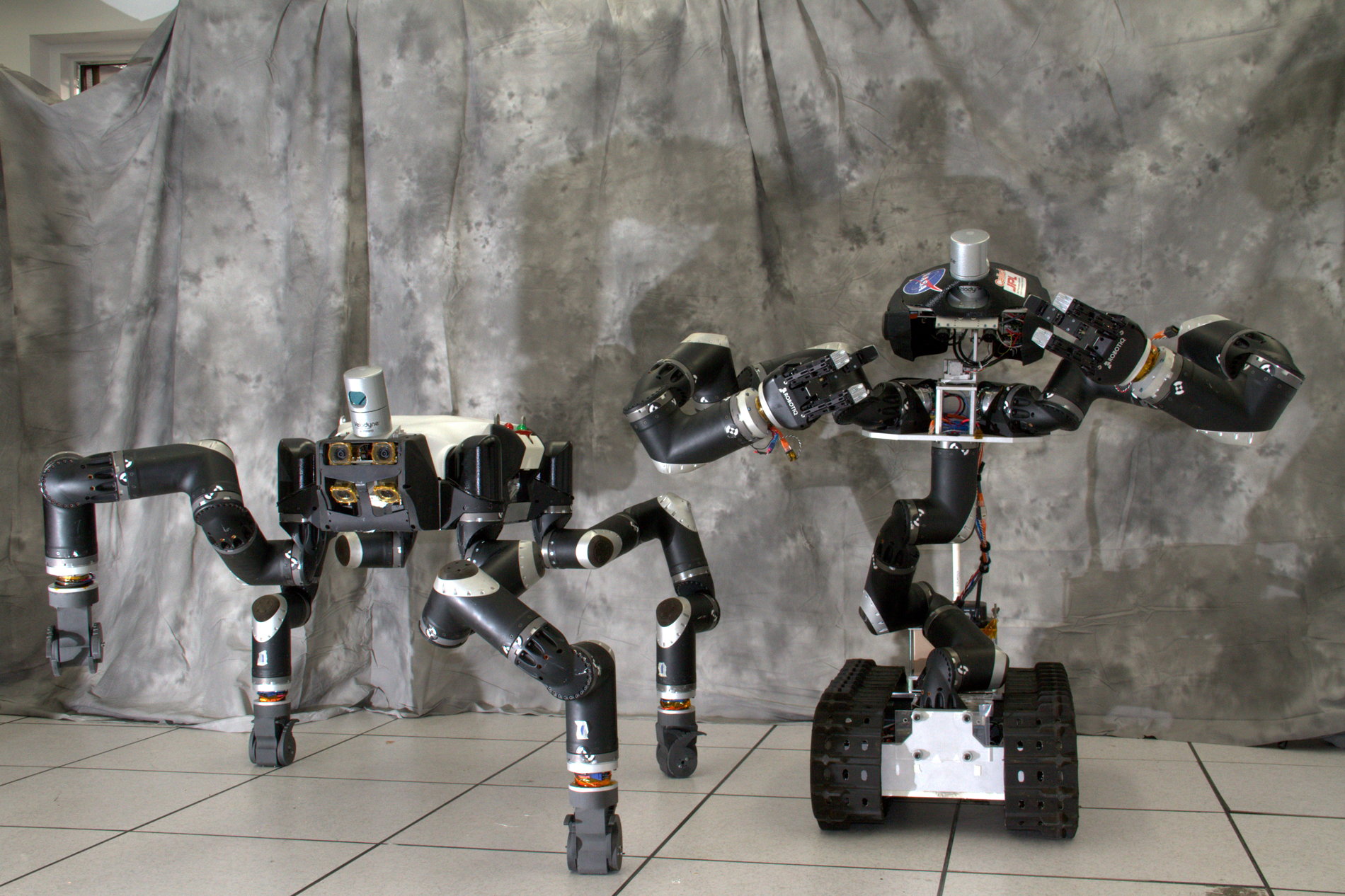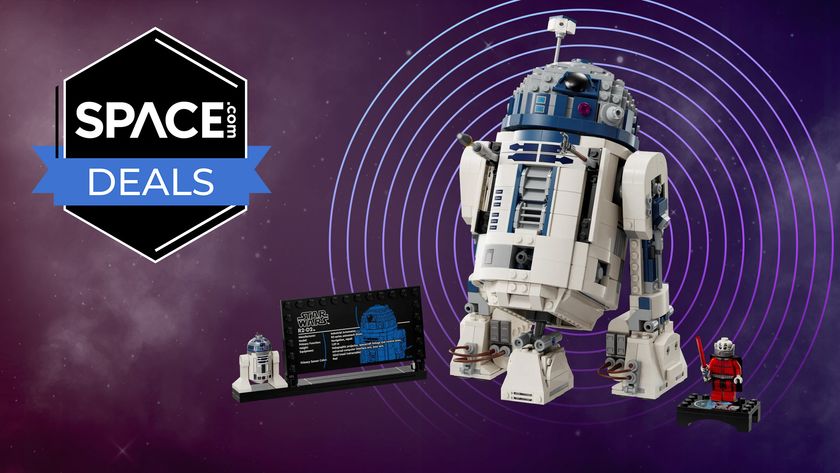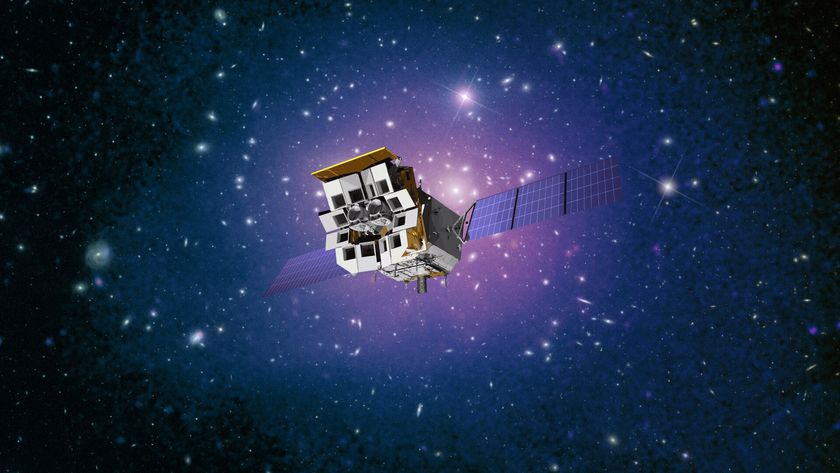NASA's Ape-like RoboSimian Set for DARPA Robot Challenge

A NASA team is putting the finishing tweaks on its amazing, and somewhat creepy, climbing robot RoboSimian, a four-limbed automaton built to compete in a U.S. military robotics challenge in 2015.
RoboSimian will compete with other robots in the DARPA Robotics Challenge, a contest that tests robots in disaster response scenarios to see how they weather situations that could be ultra-dangerous for humans. The contest will occur in June.
It was a close choice between RoboSimian, which NASA engineers have described as an "ape-like" robot, and a more human-like robotic companion constructed this year, called Surrogate, but team members decided to go with the robot that had already been tested for trials in the challenge. [DARPA's Robotics Challenge in Photos]
"It comes down to the fact that Surrogate is a better manipulation platform and faster on benign surfaces, but RoboSimian is an all-around solution, and we expect that the all-around solution is going to be more competitive in this case," said Brett Kennedy, principal investigator for the robots at the Jet Propulsion Laboratory, in a statement. JPL is managed by Caltech for NASA.
RoboSimian ambles about on four limbs and can easily climb or navigate difficult terrain. It is also equipped with up to seven sets of camera eyes on its front, stomach and sides. Surrogate, which was created out of RoboSimian's spare parts, has a more flexible spine that stands upright, allowing it to manipulate objects. But Surrogate has only two eyes and requires a track to move around, which means it would have trouble climbing a flight of stairs.
In the competition, RoboSimian's tasks will include driving and leaving a vehicle, moving over debris in a doorway, cutting into a wall, opening a valve and also navigating a field with debris in it, as well as a surprise task.
It's part of JPL's desire to create robots up to performing in dangerous environments, such as inside a nuclear plant or perhaps, one day, out in space or on another world.
Get the Space.com Newsletter
Breaking space news, the latest updates on rocket launches, skywatching events and more!
Although RoboSimian was already qualified for the challenge, it was only after six months of testing this year with the robot and Surrogate that JPL decided to go with RoboSimian for the competition. The finals will be held in Pomona, California in June 2015.
Follow Elizabeth Howell @howellspace, or Space.com @Spacedotcom. We're also on Facebook and Google+. Original article on Space.com.
Join our Space Forums to keep talking space on the latest missions, night sky and more! And if you have a news tip, correction or comment, let us know at: community@space.com.

Elizabeth Howell (she/her), Ph.D., was a staff writer in the spaceflight channel between 2022 and 2024 specializing in Canadian space news. She was contributing writer for Space.com for 10 years from 2012 to 2024. Elizabeth's reporting includes multiple exclusives with the White House, leading world coverage about a lost-and-found space tomato on the International Space Station, witnessing five human spaceflight launches on two continents, flying parabolic, working inside a spacesuit, and participating in a simulated Mars mission. Her latest book, "Why Am I Taller?" (ECW Press, 2022) is co-written with astronaut Dave Williams.
Most Popular




